#angular.js
Explore tagged Tumblr posts
Text
0 notes
Text
When it comes to website development the only dilemma developers have is to which JavaScript framework to choose . Nowadays both angular.js and React.js has gained so much attention amongst the developers .In this article we have distinguished between the two framework which has gained so much of attention amongst the developer.
Read More : https://www.intercoolstudio.com/angular-vs-react-which-js-framework-to-pick/
0 notes
Text
Hire Angular JS Developer | Angular JS Development Services
0 notes
Text
Node JS Vs Angular: Overview & Fundamental Differences
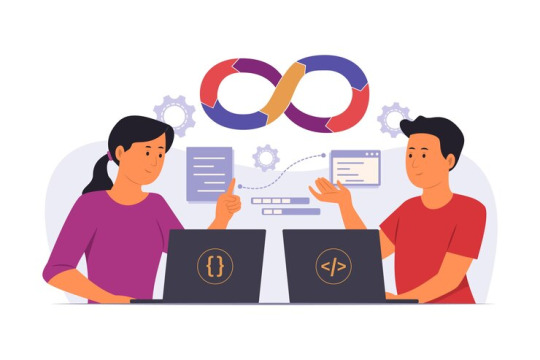
Both Angular and Node JS are popular web development platforms with distinct applications and advantages. Businesses can choose amongst them for development initiatives with greater knowledge if they are aware of their basic distinctions. Let's explore the main distinctions between Angular and Node JS.
This comprehensive comparative analysis will help businesses hire Angular.js developers or Node JS developers.
Overview of Node JS
A runtime environment called Node JS allows developers to run JavaScript code on the server side. It uses the V8 Javascript engine from Google, and hence, it improves the speed of code execution. This event-driven, non-blocking architectural paradigm has earned Node JS the reputation of being an extremely scalable and reliable choice for developing real-time web apps and APIs.
- Key Points about Node JS:
1. JavaScript runtime environment server-side.
2. An event-driven architecture that is non-blocking.
3. Perfect for developing real-time, robust applications and APIs.
4. Makes use of JavaScript on the server and client sides.
Overview of Angular
Google, on the contrary, created and maintains the front-end framework Angular. It is a client-side programming framework that is particularly intended for developing interactive single-page web applications. Angular, having the Model-View-Controller (MVC) architecture, therefore acquires several potent features, which are dependency injection, two-way data binding, and modular development. If you hire dedicated Angular developers, these features can easily be integrated into projects.
- Key Points about Angular:
1. Front-end framework for building SPAs.
2. Follows the Model-View-Controller (MVC) architecture.
3. Offers two-way data binding and dependency injection.
4. Ideal for building interactive and dynamic web applications.
Angular Vs Node JS: Fundamental Differences
1. Purpose and Focus:
- Server-side programming, including backend logic, APIs, and database operations, is the main focus of Node JS.
- Angular is designed with client-side programming, data binding, user interface management, and browser interactions in consideration.
2. Syntax and Language:
- JavaScript is the main language stack that is used equally on both sides of a client and server, respectively, in Node JS.
- TypeScript, a JavaScript superset, is used by Angular to provide additional features like static typing for developing reliable applications.
3. Building Design:
- Node JS has a non-blocking, event-driven paradigm that enables the management of multiple connections simultaneously.
- Like various other frameworks, Angular adheres to the MVC design pattern, which divides code into controllers (logic), views (user interface), and models (data). This approach encourages modularity and maintainability.
4. Development Scope:
- Backend services, APIs, real-time applications (such as messaging applications and streaming services), and server-side scripting can all be developed using Node.js.
- SPAs, business apps, dynamic dashboards, and intricate user interfaces with a wealth of features can all be developed using Angular.
5. Ecosystem and Tooling:
- A large community of npm packages, modules, and tools for server-side development, testing, and deployment exists for Node.js.
- To improve efficiency and code organization, Angular offers a full CLI (Command Line Interface) for front-end development, in addition to frameworks, components, and modules.
Conclusion
To sum up, Node JS and Angular have different uses in web development; Node JS is more concerned with server-side logic, whilst Angular is more interested in client-side interaction. While companies seeking Node.js development services should focus on backend features and scalability, those trying to hire Angular developers should think about the frontend components of their projects. Businesses can successfully utilize the capabilities of Node JS and Angular in their development operations by comprehending these basic contrasts.
0 notes
Text
Angular.JS Development Services in Canada
Devstree Canada empowers businesses with transformative Angular.js development services in Canada. Harnessing the capabilities of Angular.js, we craft dynamic and feature-rich web solutions that elevate your web applications to new heights. Trust our expertise to enhance user experiences and drive success in the digital realm.
WebPage | Angular.JS Development Services
0 notes
Text
Devstree UK Services is a leading AngularJS development company dedicated to building simple, sophisticated applications that inspire growth. Our experts have built trendsetting apps for versatile business needs and helped several enterprises stay ahead of the curve. Hire AngularJS developers from Devstree and smarten up your IT landscape with our robust app solutions.
0 notes
Text
Transforming Businesses with DI Solutions: Innovative IT Expertise
Transform your business with DI Solutions

In the ever-evolving digital landscape, businesses must harness cutting-edge technology to remain competitive. At DI Solutions, we specialize in driving business transformation through advanced IT solutions and expert services. Our dedication to innovation and excellence has empowered numerous clients to achieve their goals and excel in their industries.
Innovative IT Solutions DI Solutions excels in providing tailored IT solutions that meet each client's unique needs. Our services include custom software development, mobile app creation, web development, and UI/UX design. By leveraging the latest technologies, we deliver state-of-the-art solutions that enhance growth and efficiency.
Expert Team of Professionals Our team consists of highly skilled professionals—creative designers, experienced developers, and strategic problem-solvers. We emphasize continuous learning to stay at the forefront of industry trends and technological advancements, ensuring that our clients receive the most effective and innovative solutions.
Global Reach and Impact
With over a decade of experience, DI Solutions has made a significant impact globally, partnering with more than 120 clients across North America, Europe, Asia, and Australia. Our extensive global presence demonstrates our capability to provide exceptional IT services that address diverse business needs.
Client-Centric Approach
At DI Solutions, clients are central to our mission. We take the time to understand their business objectives, challenges, and requirements, enabling us to deliver customized solutions that surpass expectations. Our client-centric approach ensures we provide not just what is needed but what drives success and growth.
Comprehensive IT Services
Our service offerings include:
Custom Software Development: Tailored software solutions for optimal efficiency and performance.
Mobile App Development: Innovative mobile applications for Android and iOS platforms.
Web Development: Expert web development to create responsive and user-friendly websites.
UI/UX Design: Engaging user interfaces that enhance the overall user experience.
Quality Assurance: Rigorous testing to ensure the highest quality standards.
DevOps Services: Streamlined operations through integrated cultural philosophies, practices, and tools.

Join Hands with DI Solutions
Partner with DI Solutions to harness the power of innovative IT expertise. Whether you’re a startup aiming to establish a presence or an established business seeking new heights, we have the solutions and expertise to propel you forward.
For more information, visit our website or contact us directly. Let’s embark on a journey of transformation and growth together.
Transform your business with DI Solutions – where innovation meets excellence.
Contact Us Website: https://disolutions.net/ Email: [email protected] , Call: 91-9904566590 , B-301, 307, 406 Apex Commercial Center, Varachha Road, Nr. Yash Plaza, Surat, Gujarat,India-395006.
youtube
#disolutions #DI Solutions #Hire Angular.js Developers #Hire React.js Developers #Hire Vue.js Developers #Hire UI/UX Developers #Hire .NET Developers #Hire Node.js Developers #Hire Laravel/PHP Developers #Hire Android Developers #Hire IOS Developers #Hire Ionic Developers #Hire React Native Developers #Hire Full Stack Developers #Hire MERN Stack Developers #Hire MEAN Stack Developers #Mobile App Development #Web Development #UI/UX Design #Quality Assurance #DevOps Services
2 notes
·
View notes
Text
Frontend Technologies (React.js and Angular.js)
Ever since the advent of the world wide web, technologies have been researched and created to streamline the creation of Web pages that are displayed to a client upon the client's request. These web pages began by being static and non-interactive with the use of basic HTML and CSS. After awhile, the Javascript programming language stormed the world of web applications and brought a layer of interactivity, finesse, and dynamism to web applications. Since then, more technologies, most of which are built on the basic initial technologies, have come out. Two of the most popular and effective technologies are React.js and Angular.js. In this article, an attempt would be made to highlight the differences in these technologies and what makes them unique and powerful.
Firstly, React.js is built on Javascript and produced and managed by Meta while Angular is also built on TypeScript but it was produced and managed by Google.
React is a Javascript library while Angular is a framework.
React makes use of a "templating langauge" called JSX to extend Javascript into HTML and it is rendered in the server side while Angular extends the functionality of HTML by adding more attributes like "ng-bind" and it is client side rendered.
React works by using a virtual DOM, while Angular uses the real DOM.
React is a highly scalable library because of the reusability of its components while Angular is less Highly scalable.
Having itemised these differences, they each have their strengths and what makes developers prefer one over the other. React has support for mobile App development, reusability and predictability of code, one can learn it really fast Etc. Angular has faster server side rendering, fewer lines of code, takes time to learn, Etc.
I specifically prefer React to Angular which is why I am glad that React is being used in the HNG internship https://hng.tech/internship where I am currently interning. I have used React to build highly interactive web applications and look forward to honing my skills better as I use it for more daunting projects in the HNG internship. Check out HNG on their website https://hng.tech/premium
2 notes
·
View notes
Text
Match 1A[4]
Introducing an awful, cursed monstrosity that somehow spawned because people weren't satisfied with another language that a lot of people really love to hate on but is actually pretty alright... and JSFuck.
JSFuck
Everyone complains that JavaScript has too much going on. null *and* undefined? == and ===? where does it end? That's why I decided to thanos my keyboard so it only had 6 characters left. And it's still probably more usable than angular.js
C++
C is a highly performant, minimal language, that can do almost anything you put it to. It's often described as packing everything you need, and nothing you don't. C++ is not that language.
16 notes
·
View notes
Text
Mastering Fullstack Development: Unifying Frontend and Backend Proficiency
Navigating the dynamic realm of web development necessitates a multifaceted skill set. Enter the realm of fullstack development – a domain where expertise in both frontend and backend intricacies converge seamlessly. In this comprehensive exploration, we'll unravel the intricacies of mastering fullstack development, uncovering the diverse responsibilities, essential skills, and integration strategies that define this pivotal role.
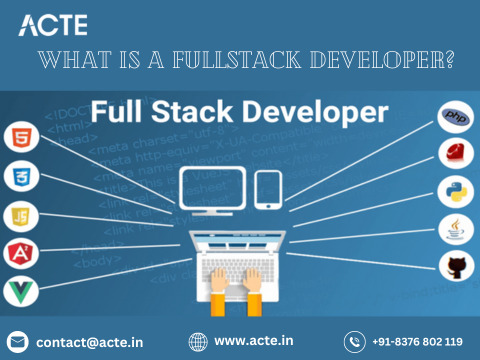
Exploring the Essence of Fullstack Development:
Defining the Role:
Fullstack development epitomizes the fusion of frontend and backend competencies. Fullstack developers are adept at navigating the entire spectrum of web application development, from crafting immersive user interfaces to architecting robust server-side logic and databases.
Unraveling Responsibilities:
Fullstack developers shoulder a dual mandate:
Frontend Proficiency: They meticulously craft captivating user experiences through adept utilization of HTML, CSS, and JavaScript. Leveraging frameworks like React.js, Angular.js, or Vue.js, they breathe life into static interfaces, fostering interactivity and engagement.
Backend Mastery: In the backend realm, fullstack developers orchestrate server-side operations using a diverse array of languages such as JavaScript (Node.js), Python (Django, Flask), Ruby (Ruby on Rails), or Java (Spring Boot). They adeptly handle data management, authentication mechanisms, and business logic, ensuring the seamless functioning of web applications.
Essential Competencies for Fullstack Excellence:
Frontend Prowess:
Frontend proficiency demands a nuanced skill set:
Fundamental Languages: Mastery in HTML, CSS, and JavaScript forms the cornerstone of frontend prowess, enabling the creation of visually appealing interfaces.
Framework Fluency: Familiarity with frontend frameworks like React.js, Angular.js, or Vue.js empowers developers to architect scalable and responsive web solutions.
Design Sensibilities: An understanding of UI/UX principles ensures the delivery of intuitive and aesthetically pleasing user experiences.
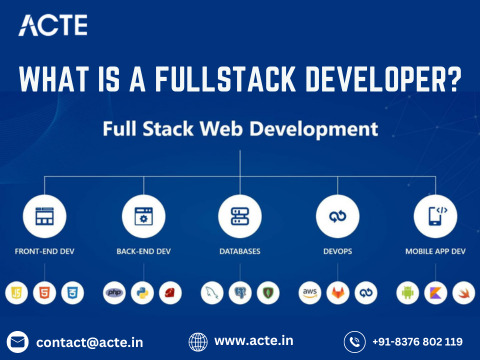
Backend Acumen:
Backend proficiency necessitates a robust skill set:
Language Mastery: Proficiency in backend languages such as JavaScript (Node.js), Python (Django, Flask), Ruby (Ruby on Rails), or Java (Spring Boot) is paramount for implementing server-side logic.
Database Dexterity: Fullstack developers wield expertise in database management systems like MySQL, MongoDB, or PostgreSQL, facilitating seamless data storage and retrieval.
Architectural Insight: A comprehension of server architecture and scalability principles underpins the development of robust backend solutions, ensuring optimal performance under varying workloads.
Integration Strategies for Seamless Development:
Harmonizing Databases:
Integrating databases necessitates a strategic approach:
ORM Adoption: Object-Relational Mappers (ORMs) such as Sequelize for Node.js or SQLAlchemy for Python streamline database interactions, abstracting away low-level complexities.
Data Modeling Expertise: Fullstack developers meticulously design database schemas, mirroring the application's data structure and relationships to optimize performance and scalability.
Project Management Paradigms:
End-to-End Execution:
Fullstack developers are adept at steering projects from inception to fruition:
Task Prioritization: They adeptly prioritize tasks based on project requirements and timelines, ensuring the timely delivery of high-quality solutions.
Collaborative Dynamics: Effective communication and collaboration with frontend and backend teams foster synergy and innovation, driving project success.
In essence, mastering fullstack development epitomizes a harmonious blend of frontend finesse and backend mastery, encapsulating the versatility and adaptability essential for thriving in the ever-evolving landscape of web development. As technology continues to evolve, the significance of fullstack developers will remain unparalleled, driving innovation and shaping the digital frontier. Whether embarking on a fullstack journey or harnessing the expertise of fullstack professionals, embracing the ethos of unification and proficiency is paramount for unlocking the full potential of web development endeavors.
#full stack developer#full stack course#full stack training#full stack web development#full stack software developer
2 notes
·
View notes
Text
Exploring the Powerhouse: 30 Must-Know JavaScript Libraries and Frameworks for Web Development
React.js: A declarative, efficient, and flexible JavaScript library for building user interfaces.
Angular.js (Angular): A web application framework maintained by Google, used for building dynamic, single-page web applications.
Vue.js: A progressive JavaScript framework for building user interfaces. It is incrementally adaptable and can be integrated into other projects.
Node.js: A JavaScript runtime built on Chrome's V8 JavaScript engine that enables server-side JavaScript development.
Express.js: A web application framework for Node.js that simplifies the process of building web applications.
jQuery: A fast, small, and feature-rich JavaScript library that simplifies HTML document traversal and manipulation, event handling, and animation.
D3.js: A powerful library for creating data visualizations using HTML, SVG, and CSS.
Three.js: A cross-browser JavaScript library and application programming interface (API) used to create and display animated 3D computer graphics in a web browser.
Redux: A predictable state container for JavaScript apps, often used with React for managing the state of the application.
Next.js: A React framework for building server-side rendered and statically generated web applications.
Svelte: A radical new approach to building user interfaces. It shifts the work from the browser to the build step, resulting in smaller, faster applications.
Electron: A framework for building cross-platform desktop applications using web technologies such as HTML, CSS, and JavaScript.
RxJS: A library for reactive programming using Observables, making it easier to compose asynchronous or callback-based code.
Webpack: A module bundler for JavaScript applications. It takes modules with dependencies and generates static assets representing those modules.
Babel: A JavaScript compiler that allows developers to use the latest ECMAScript features by transforming them into browser-compatible JavaScript.
Jest: A JavaScript testing framework designed to ensure the correctness of your code.
Mocha: A feature-rich JavaScript test framework running on Node.js and in the browser.
Chai: A BDD/TDD assertion library for Node.js and the browser that can be paired with any testing framework.
Lodash: A modern JavaScript utility library delivering modularity, performance, and extras.
Socket.io: A library that enables real-time, bidirectional, and event-based communication between web clients and servers.
GraphQL: A query language for APIs and a runtime for executing those queries with your existing data.
Axios: A promise-based HTTP client for the browser and Node.js, making it easy to send asynchronous HTTP requests.
Jasmine: A behavior-driven development framework for testing JavaScript code.
Meteor.js: A full-stack JavaScript platform for developing modern web and mobile applications.
Gatsby.js: A modern website framework that builds performance into every website by leveraging the latest web technologies.
Chart.js: A simple yet flexible JavaScript charting library for designers and developers.
Ember.js: A JavaScript framework for building web applications, with a focus on productivity and convention over configuration.
Nuxt.js: A framework for creating Vue.js applications with server-side rendering and routing.
Grunt: A JavaScript task runner that automates common tasks in the development process.
Sass (Syntactically Awesome Stylesheets): A CSS preprocessor that helps you write maintainable, scalable, and modular styles.
Remember to check each library or framework's documentation and community support for the latest information and updates.
4 notes
·
View notes
Text
IN_ Manager_D365 CRM Technical_MS Dynamics _Advisory_ Mumbai
like Node.js, Angular.js, React.jsJQuery, CSS, HTML 5, AJAX Developing REST APIsIntegration experience with external systems…) Mandatory skill sets – Dynamics 365 CRM Technical *Preferred skill sets- Node.js, Angular.js, React.js,JQuery, CSS, HTML 5… Apply Now
0 notes
Text
IN_ Manager_D365 CRM Technical_MS Dynamics _Advisory_ Mumbai
like Node.js, Angular.js, React.jsJQuery, CSS, HTML 5, AJAX Developing REST APIsIntegration experience with external systems…) Mandatory skill sets – Dynamics 365 CRM Technical *Preferred skill sets- Node.js, Angular.js, React.js,JQuery, CSS, HTML 5… Apply Now
0 notes
Text
Top 5 High-demand Front-end Programming Languages in Web Development World
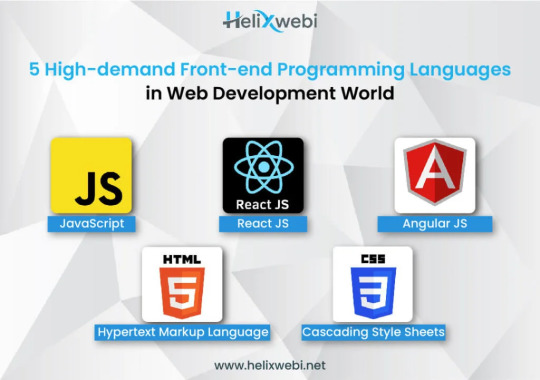
Front-end programming languages play a major role in creating the user interface or client side of the website and shaping the next level user experience. Front-end developers can find a large number of front end development languages right now in the web development world for advanced front-end development. But instead of learning coding languages randomly, they should priotize learning and mastering those in-demand front-end languages that will continue to be valuable in the upcoming years.
Learning those particular demandable languages will bring long-time success and help in better career growth. Beginners who have recently stepped into the web development world should have a look at this blog as we will share the names of the top 5 in-demand front-end coding languages in this blog.
List of In-Demand Front End Development Languages for A Better Carrier Path
As per the changing demands of users, features and functionalities of websites are becoming more advanced day by day. As a result, new trends are coming for both the front end and back end development languages. But there are some front-end programing languages that have been in the web development industry for years and will continue being the most used languages in future. Here is the list of the high-demand front end languages that are useful for a great career path.
1. HTML
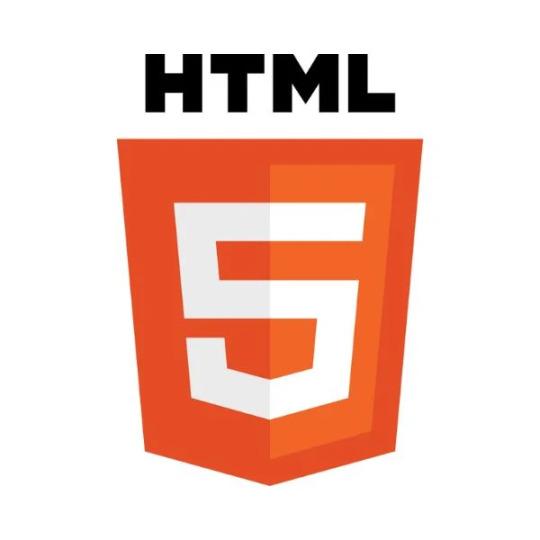
Since this language has so many applications, its demand will not decrease even a little. At the initial stage of web development, beginners can’t adopt complex and extremely advanced codings. For them, HTML is the best option to learn as it is so easy and quick to learn and doesn’t have any complex coding. Beginners can start their career with a minimum salary if they have knowledge of this coding. However, learning HTML only cannot help in getting high-paying jobs
2. REACT.JS

React.JS is one of the most used front-end programming languages in both the web and app development worlds right now. It is reported that React.JS will remain the key player in the upcoming years as well. React.JS improves the overall performance of the web pages, and allows developers to build dynamic websites. And the main thing about React.JS that will keep it in high demand in future also is that it helps in indexing web pages properly and quickly, and helps in making the website SEO-friendly.
Developers who will learn React.JS will get he brightest future for their career path. With the knowledge of CSS language, one can get employed as a UI designer, React Native Developer, React Engineer, and so on.
3. CSS
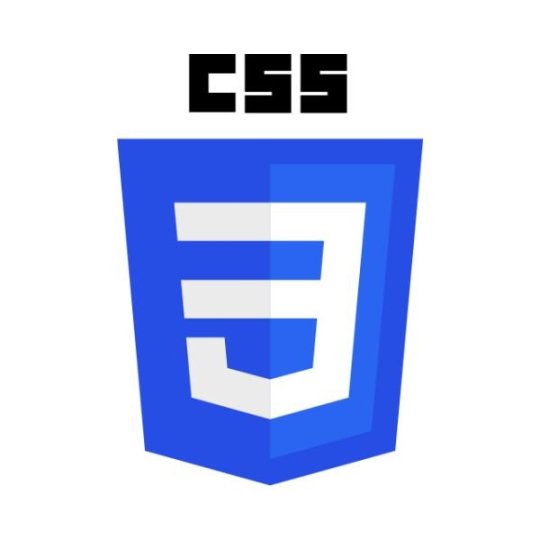
No matter how much complex a website is, CSS makes it extremely easy-to-navigate for users. Not only a front-end developer, with CSS skills, one can get more successful career options like Full Stack Developer, Software Developer, Web designer, and so on.
4. ANGULAR.JS
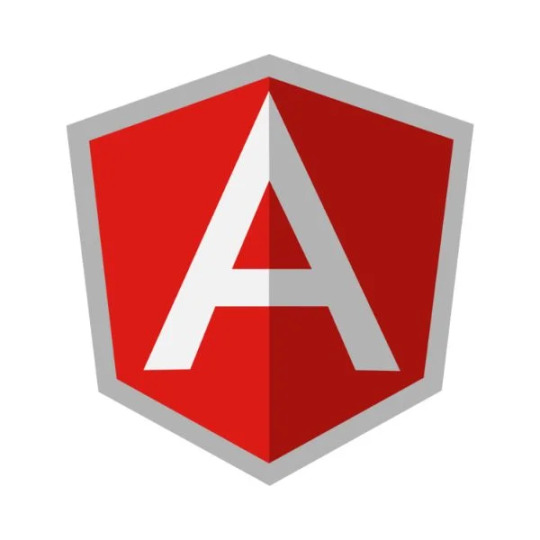
Angular.JS is not a language but an open-source JavaScript framework for front end web development. Angular.JS came into the web development world in 2009 and since then it has gotten so many updates that made it one of the cutting-edge tools for web development. It is high in demand because of its ability to build scalable web applications with the best performance, it helps in creating complex but lightweight web apps, and so on. Beginners can master this one without much effort as lesser coding is required for Angular.js. One can get a handsome early income as an Angular.JS developer.
5. JAVASCRIPT
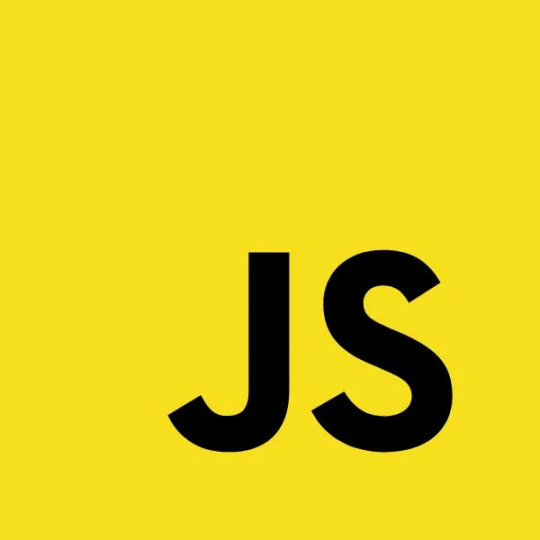
One can create pop-up windows, add animations, drop down menus and more advanced features to the web pages using JavaScript language. Demand for Javascript experts is extreme in the market and it will not decrease in the upcoming future. One can get various job opportunities as a javascript expert such as Full-stack developer, Front-end Developer, Back-end Developer, .NET Developer, Software Developer, Game Developer, and more.
Final Words
Want to start your career in Front-end development? Then start learning all these high-demand front end web languages that we mentioned above. You will never face career issues or never fear of losing jobs suddenly if you will master these front-end programming languages because they are never going to be backdated in the market.
0 notes
Text
Best Web Development Company in Lucknow
In today’s digital-driven world, having a professional and dynamic website is crucial for businesses to establish a robust online presence. SigmaIT Software Designers Pvt. Ltd. has earned the reputation of being the best web development company in Lucknow by delivering innovative and customized solutions to clients from various industries. With their expertise, creativity, and dedication, SigmaIT empowers businesses to achieve their online goals and stand out in the competitive digital space.
Why SigmaIT is the Best Choice for Web Development -
Customized Web Solutions - SigmaIT specializes in providing tailored web development solutions that meet the unique requirements of businesses. Whether you need a corporate website, e-commerce platform, or custom web application, they create scalable and feature-rich websites designed to deliver results.
Expert Team of Developers - With a team of experienced and highly skilled developers, SigmaIT ensures that every project is executed with precision and expertise. They are proficient in the latest technologies and frameworks, including HTML5, CSS3, JavaScript, PHP, Laravel, and more, enabling them to deliver cutting-edge solutions.
Responsive and User-Friendly Designs - In an era where mobile devices dominate internet usage, SigmaIT prioritizes responsive designs that provide an optimal user experience across all devices. Their websites are visually appealing, easy to navigate, and built to engage visitors effectively.
SEO-Optimized Websites - SigmaIT integrates search engine optimization (SEO) best practices into its web development process. Their SEO-friendly designs ensure that websites rank higher on search engines, attract organic traffic, and generate leads.
Diverse Industry Expertise - SigmaIT caters to a wide range of industries, including e-commerce, healthcare, education, real estate, hospitality, and more. Their in-depth understanding of different business sectors enables them to craft solutions that align with specific industry needs and objectives.
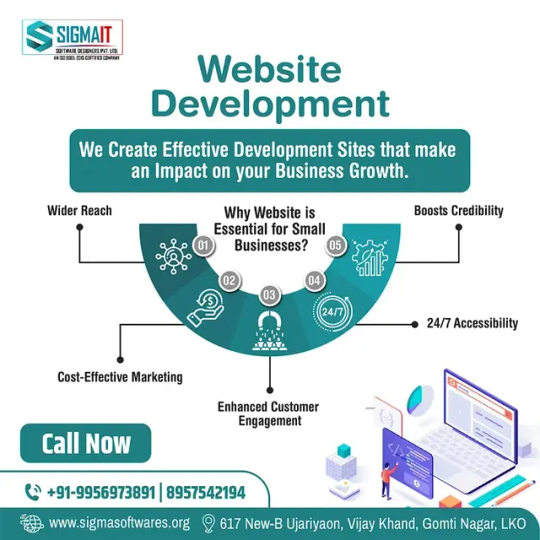
Services Offered by SigmaIT -
Custom Web Development - Tailored solutions that address unique business challenges and requirements.
E-Commerce Development - Feature-rich and secure platforms with advanced functionalities like product catalogs, payment gateways, and inventory management.
CMS Development - Efficient content management systems like WordPress and Joomla for easy updates and management.
Web Application Development - Robust and scalable web applications for seamless business operations.
Website Maintenance and Support - Ongoing support and maintenance services to ensure optimal website performance.
Landing Page Design - High-converting landing pages for marketing campaigns and lead generation.
Technology Expertise -
SigmaIT stays ahead of the curve by utilizing the latest tools and technologies in web development. Their expertise includes:
Front-End Development: HTML5, CSS3, JavaScript, React.js, Angular.js.
Back-End Development: PHP, Laravel, Node.js, Python.
Database Management: MySQL, MongoDB.
Client-Centric Approach -
At SigmaIT, the client always comes first. They work closely with clients to understand their goals, ensuring the final product meets expectations and drives business success. Transparency, timely delivery, and unmatched support are hallmarks of their service.
Conclusion -
SigmaIT Software Designers Pvt. Ltd. has established itself as the best web development company in Lucknow by delivering innovative, reliable, and high-quality web solutions. Their commitment to excellence, combined with their expertise in the latest technologies, makes them the ideal partner for businesses looking to create a powerful online presence.
Choose SigmaIT to elevate your digital journey and transform your vision into reality.
Contact Information -
Email — [email protected]
Phone — 9956973891
Address — 617, NEW -B, Vijay Khand, Ujariyaon, Vijay Khand 2, Gomti Nagar, Lucknow, Uttar Pradesh 226010
#webdevelopmentinlucknow#webdevelopmentservicesinlucknow#bestwebsitedevelopmentservicesinlucknow#websitedevelopmentservicesinlucknow#websitecompanyinlucknow#websiteservicesinLucknow
0 notes
Text
Web Design Companies in Qatar: Expert Guide to Costs & Quality [2025]
Qatar’s digital world boasts more than 175 web design companies that have delivered 179 successful projects and earned 120 client reviews. These companies offer services ranging from simple websites at QAR 5,000 ($1,370) to sophisticated solutions that can cost QAR 50,000 ($13,700) or more.
Website design companies in Qatar work with prestigious clients from real estate, hospitality, and finance sectors. Our team has analyzed the local web design market thoroughly to help you choose the right development partner. This complete guide shows you the costs, quality standards, and essential factors to think over while selecting Qatar’s ideal website design company for your project.
Qatar Web Design Market Overview
The Application Development Software market in Qatar will reach QAR 335.96 million by 2025. The digital transformation market should grow at an impressive CAGR of 16.43% between 2025–2030.
Current Market Size and Growth
Qatar’s web design sector stands as a vital component of the country’s digital ecosystem. The market shows reliable growth, especially when you have e-commerce and corporate sectors. The rising smartphone penetration rate has made web design companies focus on mobile-first development approaches.
Key Players and Specializations
The market features several prominent web design companies:
· Artisans Digital — specializing in UI/UX design and responsive development
· Make it WOW — focusing on custom website development
· Developer Bazaar Technologies — expert in mobile-friendly design
· Curve Design Qatar — specializing in marketing integration
· Daya — known for authentic brand development
These companies provide services ranging from QAR 5,000 for simple websites to QAR 100,000 for complex corporate solutions. Local web design agencies have got recognition through prestigious awards like the MENA Digital Awards.
Industry Standards and Certifications
Web design companies in Qatar follow strict quality standards and cultural considerations. Successful agencies must show proficiency in dual-language development that supports both Arabic and English interfaces. They must also comply with Qatar’s data protection laws and e-commerce guidelines.
Professional certifications are the foundations of the industry. The Certified Web Developer (CWD) certification, recognized throughout Qatar, confirms expertise in modern web development practices. Companies must also prove their competency in mobile optimization, responsive design, and local payment gateway integration.
Website Development Trends in Qatar
Qatar’s web development has grown by a lot, and companies now use state-of-the-art frameworks and technologies to create exceptional digital experiences.
Popular Design Frameworks
Web design companies in Qatar depend on several robust frameworks. React.js guides the digital world, especially in building dynamic single-page applications. Developers choose Angular.js over traditional approaches when they need scalability, making it the top choice for social networking and interactive platforms. Vue.js has become popular because it’s lightweight and perfect for progressive web apps with its compact 18–21 kilobyte size.
Mobile-First Development Practices
Smartphone usage has altered the map of development practices in Qatar. Progressive Web Apps (PWAs) are now the life-blood of technology that offers fast loading times and offline capabilities on devices of all types. These applications provide uninterrupted experiences and work well even when network conditions aren’t ideal. Accelerated Mobile Pages (AMP) technology has grown in importance because it boosts mobile loading speeds and user experience.
Emerging Technologies
Qatar’s web development scene shows rapid tech advancement. Companies now blend AI and machine learning into custom web solutions to create tailored experiences. AR and VR technologies shape website development’s future. Qatar’s web design companies also use AI-powered chatbots to improve customer service and create personalized user interactions.
Cloud infrastructure and data centers have made Qatar a digital innovation hub. Microsoft’s global datacenter region and Google Cloud’s Doha cloud region have contributed by a lot, and they could generate over QAR 65.50 billion in the coming years.
Local vs International Web Design Companies
Businesses looking for digital solutions must think about several factors when choosing between local and international web design companies in Qatar.
Comparative Advantages
Qatar’s local web design companies bring unique benefits through their deep grasp of regional market dynamics. These benefits include:
· A deep grasp of how local consumers behave
· Knowledge of Qatar’s business rules
· Strong ties to the local business community
· Swift support and maintenance response
· Clear view of what regional clients want in design
Communication and Cultural Factors
Website development in the Qatari market depends heavily on cultural awareness. Local web design companies have shown they excel at understanding Arabic design elements and cultural subtleties. International firms often struggle with cultural context, while local developers naturally create imagery and content that appeals to Qatari audiences.
Project Management Approaches
Local web design teams blend traditional and agile practices in their project management. This mix helps them adapt to local business needs while meeting international standards. Their teams include PMP-certified consultants who lead diverse working groups.
Being close to clients makes face-to-face meetings and immediate communication possible, which creates better teamwork during development. International firms might have better prices, but local companies respond faster and give more customized service because they work in the same time zone.
Qatar’s local web design companies have built an impressive track record with successful projects in businesses of all types. They know Qatar’s data protection laws and content rules, which helps websites stay compliant with local regulations. All the same, these companies keep up with global standards by using international best practices in their development work.
Success Stories and Case Studies
Qatar’s top web design companies have achieved remarkable results in a variety of sectors, from healthcare to industrial projects.
Notable Qatar Website Projects
Gulf Healthcare International exemplifies successful web implementation with its customized healthcare solutions throughout the Middle East. Qatar Polymer Industrial Company’s website redesign stands as another success story in industrial development. The company earned ISO 9001:2015 certification for its excellence.
ROI Analysis and Metrics
Web design projects in Qatar have shown impressive returns on investment. Recent case studies reveal that businesses earn QR 5 in revenue for every QR 1 they invest in digital marketing and web development. Here are the key success metrics:
· 30% increase in online sales through targeted campaigns
· 25% reduction in customer acquisition costs
· 500+ completed web projects by leading firms
Lessons Learned from Failed Projects
Studies of unsuccessful projects gave an explanation about what web design companies in Qatar should avoid. These are the main reasons projects fail:
Poor communication and frequent requirement changes cause most project setbacks. Many projects faced early challenges because of unclear scope definition and poor project management skills. Research shows that educational background substantially affects project success rates.
Today’s successful web design companies in Qatar make client communication and detailed project documentation their top priorities. Companies have enhanced their delivery processes and quality assurance measures through careful post-project analysis.
Conclusion
Qatar’s web design companies are pioneering digital transformation by combining local expertise with global standards. Our analysis shows these companies deliver exceptional returns — businesses earn QR 5 for every QR 1 they invest in digital development.
These local agencies succeed especially when you have their deep grasp of Qatar’s cultural subtleties and business rules. Their success stories span healthcare to industrial projects, and they consistently deliver results through mobile-first development and emerging technologies.
Quality stands supreme in Qatar’s web design industry. The most successful projects highlight the value of clear communication, detailed documentation, and compliance with local and international standards. The market will reach QAR 335.96 million by 2025, making Qatar an attractive hub for web development services.
Companies should pick partners who show cultural awareness, technical skills, and solid knowledge of the digital world. This strategy will give a website that looks great and generates real business outcomes.
0 notes